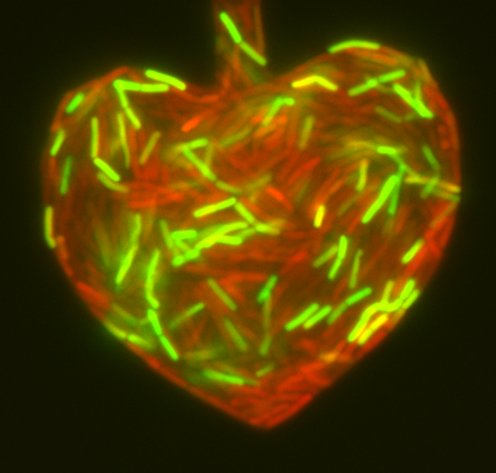Phenotypic heterogeneity as a strategy for speeding up adaptive evolution at a minimal cost

Bacillus subtilis shows phenotypic hetereogeneity in terms of differentiation into the state of competence for transformation. Here, a microfluidic device was designed for studying differentiation dynamics in microstructured environments.
Bacillus subtilis shows phenotypic variability in the stationary growth phase. In particular, a well-defined fraction of isogenic cells differentiates into the state of competence for transformation. Various regulators controlling this competent fraction have been identified but a full understanding of the benefit of having such a defined fraction has yet to be found. We address the question of whether this type of behavior, population differentiation and competence development, is optimal to speed up adaptation while minimizing the cost of competence development. We are setting up laboratory evolution experiments to test various hypotheses based on evolutionary theories
Review Articles:
Maier, B. Competence and transformation, Bacillus: Cellular and Molecular Biology, ed. Peter Graumann, 3rd edition, Caister University Press, 395 (2017)
Leisner, M., Stingl, K., Frey, E., Maier, B. Stochastic switching to competence. Curr. Opin. Microbiol. 11(6), 553-559 (2008)
Maier, B. Stochastische Differenzierung als bakterielle Überlebensstrategie. Biospektrum 2/2010